Written by travel writer Andrew Davis.
So you are planning a trip to the Balkans. Where do you go? What should you see? Here are eight must-see places in the Balkans that round out the best way to spend one month in Balkans without rushing around like a maniac.
This is not just some list. This post has detailed information on what to see, what to do, and what you for sure can’t miss. It also includes invaluable tips on eating in and traveling through the Balkans. You might even say this is an all-in-one Balkans itinerary. Once you decide a long-term trip in the Balkans is the way to go, we’ve got even more valuable information to share in our Guide to Backpacking the Balkans.
Skip Ahead To My Advice Here!
Split, Croatia
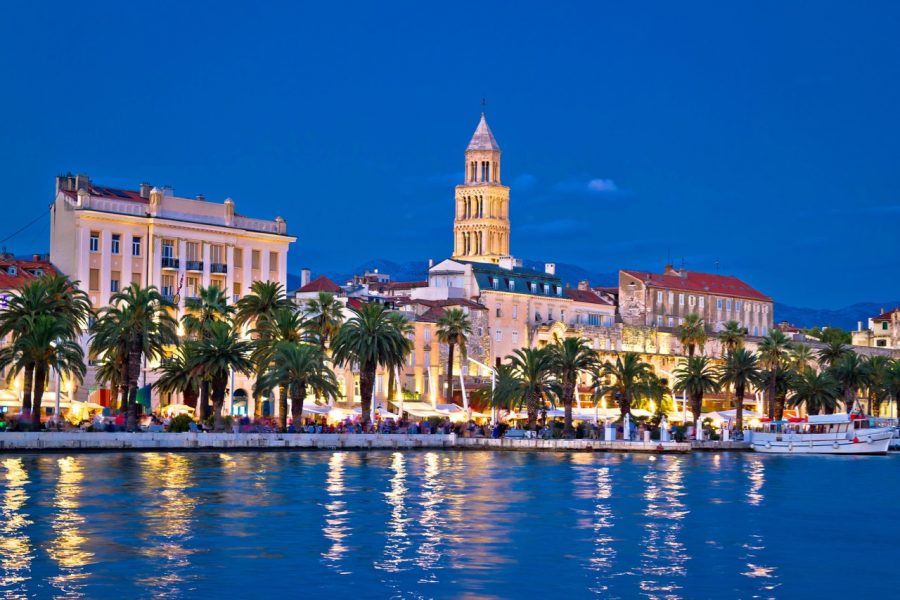
Split is a historical city found in the center of Dalmatia, Croatia. Having been invaded and owned by the Romans, Byzantines, Venetians, French, and Austria-Hungarians, it is easy to see its multicultural heritage through its food, art, and architecture. Split is the perfect place to start one month in the Balkans with soaring green hills, crystal blue waters, and smooth white Roman palaces.
How To Get To Split

We traveled to Split by plane. Split’s airport is located approximately 25 km west of Split. To get to Split, the best way from the airport is by private transfer or to the airport shuttle bus.
Just note that if you take that bus, it may seem confusing at first. At first, it was not 100% clear which was the right bus, and then after putting our luggage in the hold and making our way onto the bus, we came face to face with a few confused-looking tourists, much like us, they were expecting the bus driver to already be on the bus. The confusion only grew when there was still no bus driver after twenty minutes.
That said, eventually, after about thirty minutes, the bus driver arrived and strolled down the central aisle of the bus asking for payment for the journey. Once we had paid our 4 euro each, we headed off around the bay, separating the airport from the central city. The bus then dropped us off at the Riva (the central part of the harbor near the old city). From here, it was just a short walk towards our accommodation.
Alternatively, you could get a taxi or make arrangements with your hotel or accommodation host.
What To See In Split
First of all, Split belongs on any Balkans travel itinerary. This city is absolutely filled with amazing attractions. You can see a massive list of what to see in Split here, but these are the main highlights I suggest:
Diocletian’s Palace

This was one of the first places that we saw. Created to house Diocletian in his retirement, this old Roman palace (albeit built more like a fortress) is now home to many shops, restaurants, and accommodations.
As the busy, beating heart of Split’s old town, we spent many afternoons ambling around its white, winding streets. The smell of lavender rose from various stalls and colorful artwork can be seen at multiple artisan shops.
There are also many eateries inside the palace – no matter your budget. I can heartily recommend trying the Ćevapi (pronounced che-va-pee), a meaty sausage dish served on a flatbread with chopped onion and a delicious red pepper sauce called ajvar.
Ensure that you check out the palace basement (featured in GOT), filled with colorful stalls and the massive dome above it, both found through the Peristyle near the bell tower.
Green Market (Pazar)
Found on the east side of Diocletian’s palace is a bustling market selling artisan wares, bread, vegetables, meats, and anything else you may want to buy.
If you are staying where you can self-cater or need a spot for lunch, ensure that you buy some produce from the stalls. We purchased an array of vegetables from a stall and had some of the best-tasting tomatoes I think I’ve ever had.
This area is best wandered down, taking in the smells of fresh vegetables, strawberries, and cheese stalls. For those who have traveled to places such as Turkey or Morocco and are afraid to stop and take a look in case you are pressured into buying anything, please do not worry. Although the stallholder is likely to start a conversation with you, they are unlikely to try and force you to purchase anything.
Grgur Ninski
Found near the Golden Gate, this statue of Croatian Bishop Gregory of Nin is made by local artist Ivan Meštrović. This statue is intriguing for two reasons. Firstly its hands are very dynamic in contrast to several other statues. Secondly, it has a very shiny toe from everyone rubbing it. You may also want to, as it is said that rubbing his toe will bring good luck and grant wishes.
The Coastline

Split is right on the Adriatic Sea coastline, and just outside the sea gate of Diocletian’s Palace is the Riva. Housing many benches, it is very easy to while away the hours watching tourists and locals hurry along by the sea, the boats lazily drifting off towards various Croatian Islands if you are out late enough, and the sunset into the Adriatic.
Due to being on the coast, all you have to do is follow the sea towards the majestic bell tower of Diocletian’s Palace. Get off the beaten path, and follow the Riva all the way to the right along the Split headland. However, I implore you not to be content just sitting on the Riva, no matter how tempting it is.
Once you get further away from the boats in the harbor, you will find small beaches covered in rocks to scramble on, beautiful azure bays to swim in, and the salty smell of the sea.
What Not To Miss In Split
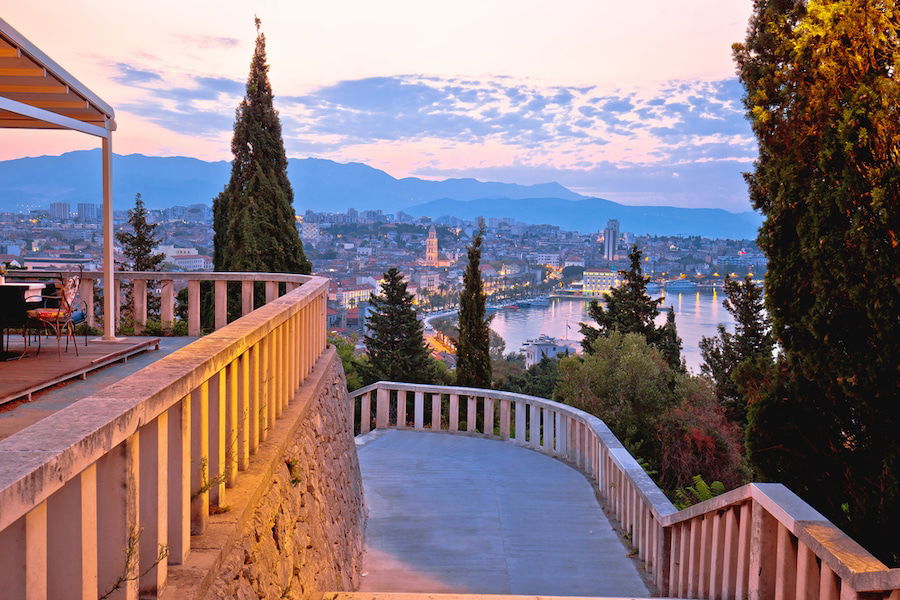
Marjan, a stunning green hill, aptly named the lungs of Split. Grab a map from the tourist office near the bell tower in Diocletian’s Palace and head up the lush green hill. Although the climb is steep, it is manageable, and we are not the fittest of people. Many people will stop once they reach the observatory as there are two paths down.
However, I believe the views are worth it if you climb the 300-odd steps toward the Croatian flag on a hill. From here, you can see fantastic sea views down both sides of the headland. Honestly, do not miss this.
One Month In The Balkans: Split In A Nutshell
- Arrive by air
- Bus from the airport costs 4 euro per person.
- See Diocletian’s Palace
- Walk along the Riva
- Rub a shiny toe
- Try street food in the Palace
- Don’t miss Marjan Hill
- Or, try this list of things to do in Split
Mostar, Bosnia & Herzegovina
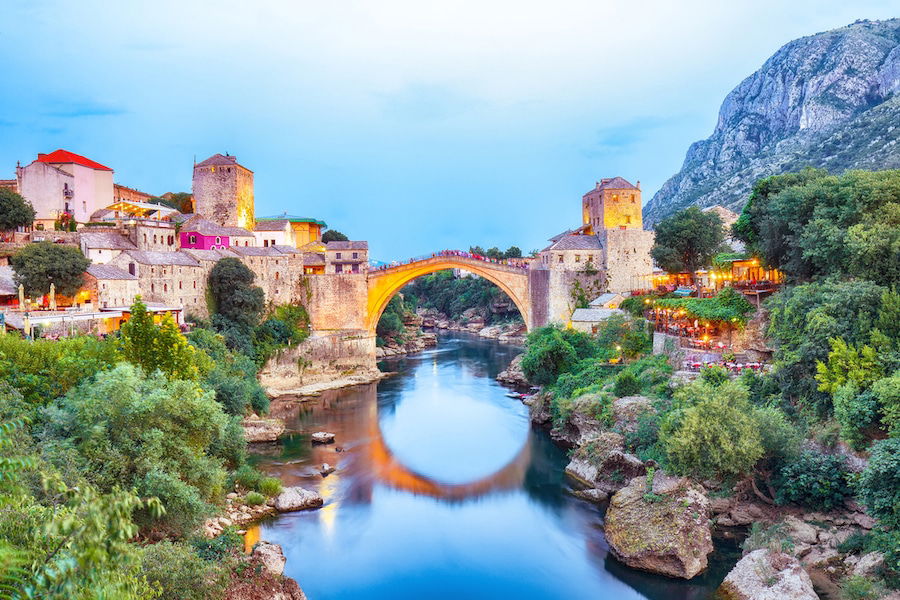
Mostar is an old Ottoman-era city located within the Herzegovina region of Bosnia and Herzegovina. Best known for the bridge that gives the city its name, it is intersected with a cold blue river, which was the front line of a vicious war previously fought in Mostar.
Today this river, as in antiquity, is the scene of defiant jumpers diving into the cold waters from the city’s famous bridge.
How To Get To Mostar
From Split, we took a bus toward Mostar in Bosnia and Herzegovina. (You can also get there from Sarajevo, the vibrant capital of Bosnia and Herzegovina.) The bus cost us 18 euro and a further 1 euro for putting our luggage into the hold. The bus journey is a very long journey to Mostar (over 4 hours, to be precise). However, there are many stunning landscapes that you drive through.
A private transfer might be a better way to go if a few of you, as you can stop where you like.
As you drive along Croatia’s coastal roads, you will see grey mountains soaring above the red-roofed houses that stretch out towards the azure blue sea. Once you have crossed the border into Bosnia and Herzegovina, you will see the same mountains punctuated with blue lakes and green shrubs as you wind your way toward Mostar.
Upon arriving at Mostar, it is possible to feel slightly shocked and bewildered about where you are and wonder why this place is written about. When we arrived, there were roadworks down the main street and a couple of beggars asking us for money. We felt a bit unsure as we walked down this street and saw all the buildings pockmarked with bullet holes that serve as a sobering reminder of the recent war.
However, keep going; despite its troubled past, Mostar is a beautiful city with great people.
What To See In Mostar
The Old Bridge

This quintessential icon of Mostar was built in the 16th Century and stood for 427 years before being destroyed by war in the 1990s. Locals describe this building on the east side as a symbol of Mostar, and many say that its destruction was commanded to destroy the morale of the Bosniaks.
However, the bridge was rebuilt in 2004 and still stands over the icy blue waters of the Neretva river. It’s one of those places that you cannot afford to miss in the region. Any self-respecting traveler or backpacker should include Mostar in their Balkans road trip itinerary.
The Divers
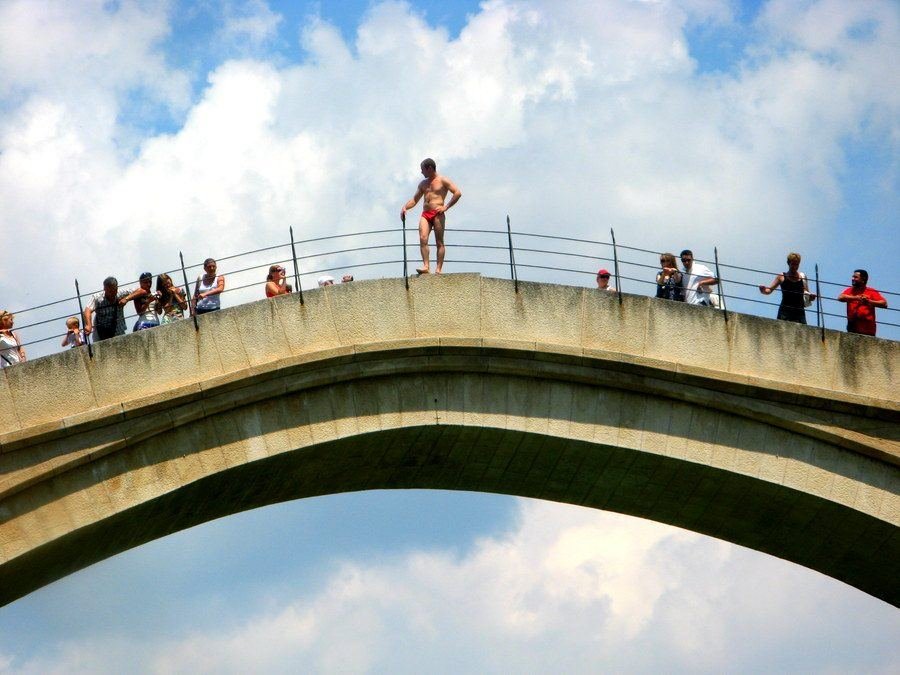
A particular curiosity of the bridge is the divers who throw themselves off it and plunge into the waters below. This local tradition is said to have been done since its opening in the 16th Century. This tradition has even continued since the destruction of the war.
A local told us that divers would still jump off the temporary cable bridge after the destruction of the war. They would do this to send a message they could never break the spirit of the Bosniaks.
Today, Mostar’s diving club still dives off the bridge; they often go around asking for tips before doing so. If you plan to take photos of them or film the dive, be sure to give them some money, as they are taking a terrible risk diving into the waters below.
It is worth noting that the dive should not be attempted without proper instruction. It is very easy to break something when diving into the river. Also, the Neretva is very cold, and the sudden temperature change can cause heart attacks (this is why the divers douse themselves with cold water before jumping).
However, if you do particularly want to dive off the bridge, speak to the diving club. They will train you to dive (25 euro if you do the jump 10 euro if you decide not). Upon completion, you get to sign your name in the book and receive a certificate.
What Not To Miss In Mostar
It is worth pointing out that many things to see in Mostar relate to the recent war or the bridge. So, for this reason, I would say that the thing not to miss is a tour of the Herzegovina area. We did one of these with our accommodation, and I can honestly say it was completely worth it. For the best experience, see if you can do a full-day tour (09:00-17:00). Our tour entailed the following:
Blagaj
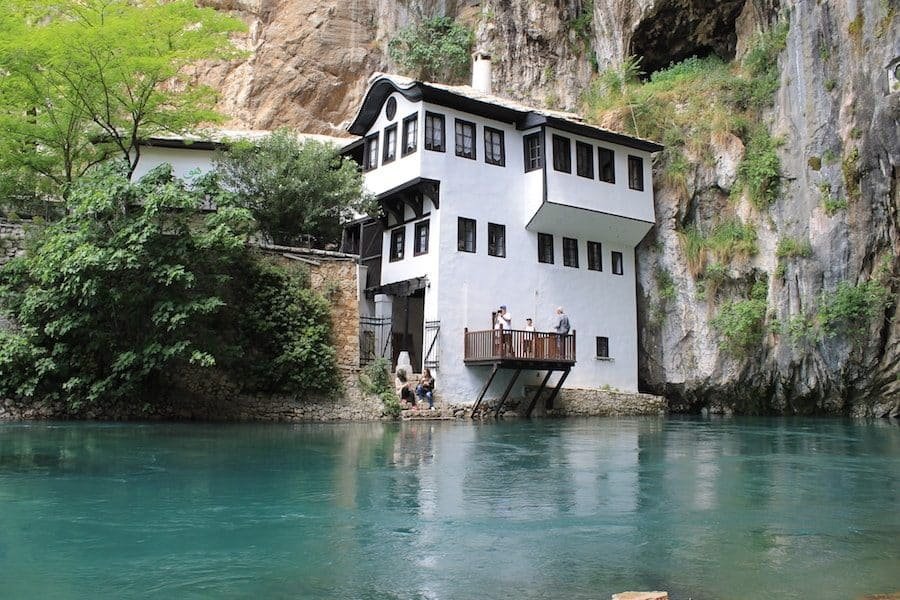
Blagaj is the start of the Buna river (which eventually feeds into the Neretva River in Mostar). By the mouth of the river, a Dervish house is founded. It is said that this house was built there due to the river’s healing waters. It is possible to explore the house and the river. It is said that those who drink the water will return one day.
Hum Hill
This hill is directly above Mostar and is dominated by a large cross. The Croats controlled this hill during the war and used it as a base for snipers to fire upon the East Side of Mostar. From here, our guide told us many stories about the war and explained how it all started.
Kravica Falls
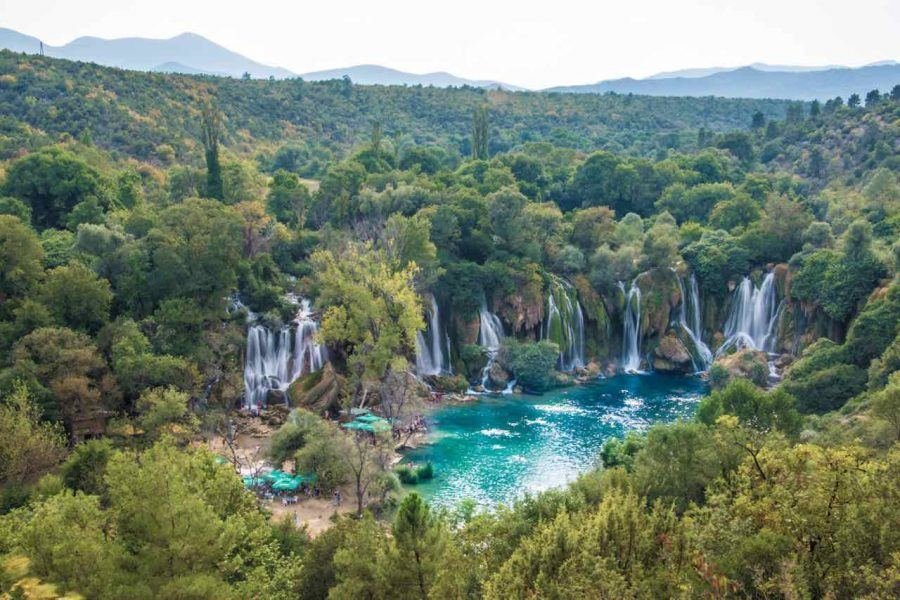
These beautiful waterfalls cascade into the clear blue waters of the Trebižat River, a major tributary of the Neretva river. There is a waterside restaurant; from here, it is possible to swim in the waters. We went in May, and it is worth noting that the waters are not as warm as the air around it.
Walking by the waterfalls is a great way to see their natural beauty if you don’t fancy swimming. They’re amazing! Our guide, however, assured us that the water is warmer in the high season of June-September. This waterfall is sure to be one of the highlights of your backpacking Balkans itinerary.
Počitelj
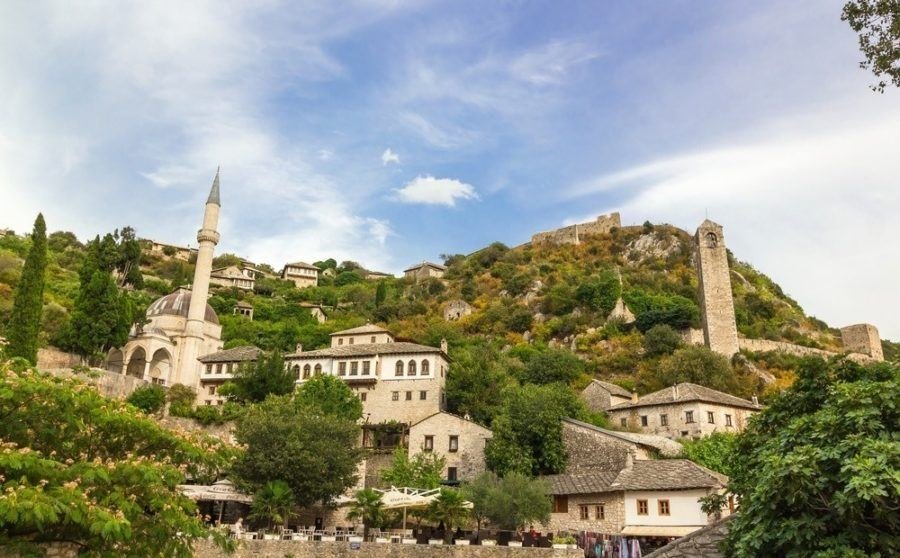
Deriving from the word for rest, this town was a waypoint between Dubrovnik and other places further east. This sixteenth-century town has high-rising fortifications and a mosque.
Like much of the area, this town was significantly damaged during the war and has undergone some renovations. It is best seen by climbing up the steep hill towards the tower and the fortress at the top of the hill.
One Month In The Balkans: Mostar In A Nutshell
- Arrive by bus or private transfer
- See the Bridge
- Take a tour of Herzegovina
- Watch the brave divers
- Find out more about Mostar here
Brands We Use And Trust
Dubrovnik, Croatia
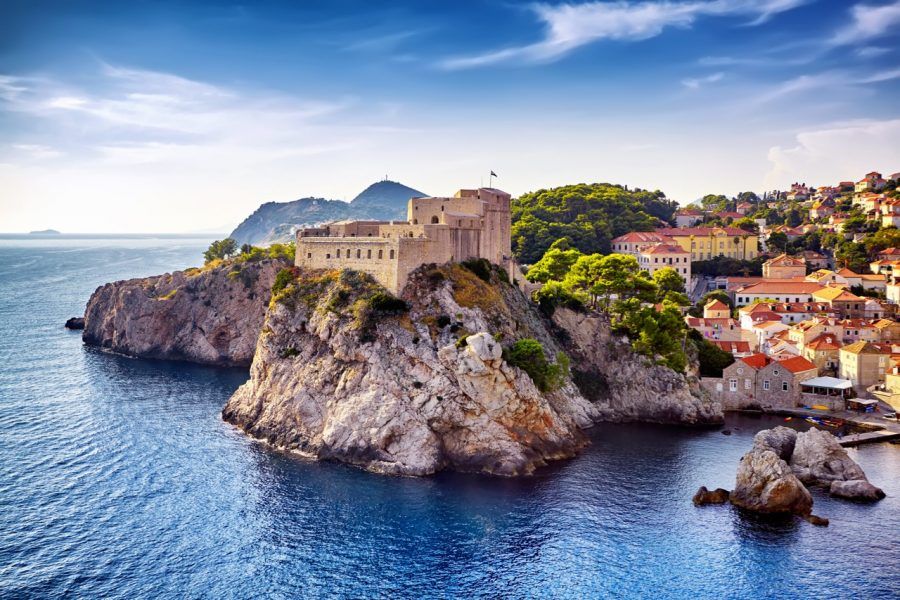
Dubrovnik, arguably the best-known place in Croatia, is also known by its famous name, Kings Landing from Game of Thrones. Dubrovnik’s classic old town truly deserves its title of the Jewel of the Adriatic.
How To Get To Dubrovnik
We took a bus from the central bus station in Mostar, costing us 32 KM each (Convertible Marks, the currency in Bosnia and Herzegovina, 17 euro). The Bus journey is long but takes you through some beautiful countryside. This takes you through a beautiful Bosnian coastal town called Neum. We drove back through Počitelj and back into the northern half of Croatia before heading south again towards Dubrovnik.
This place is a bit of an oddity as it is the only stretch of the coast that Bosnia owns and divides Croatia into two halves. It turns out that the ownership of this 20 km stretch of coast dates back to the 1699 Treaty of Sremski Karlovci as a buffer zone between the Ragusa republic (which Dubrovnik historically was part of) and the Dalmatians (where Split is located).
Once arriving in Dubrovnik, it can be a bit of a shock to realize that the main international bus stop is about 5 km away from the Old Town. Do not worry, though, as several buses run down to the Historical Center for as little as 2 euro. The bus takes you all the way to Dubrovnik through the three separate border checks and over the Franja Tudmana bridge.
If you want to travel faster and with less fuss, try a private transfer from Mostar to Dubrovnik here.
What To See In Dubrovnik
Game Of Thrones
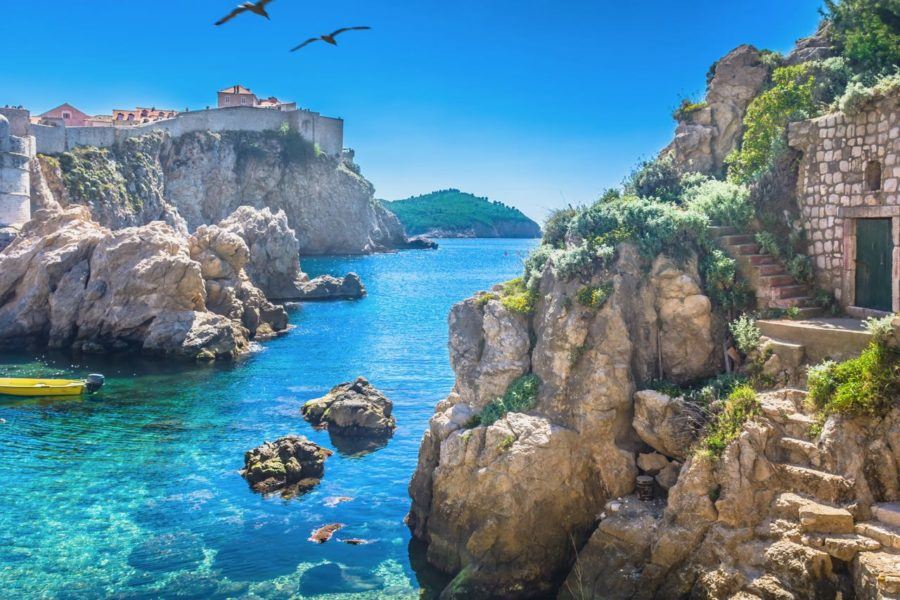
As I am sure any Game of Thrones fan knows, this town is the setting of the famed Kings Landing from the franchise. I must admit I have not seen the program yet, but it was clear from many that I spoke to that Dubrovnik was the place to go if you were a Game of Thrones fan.
Many places you go within the Old Town will land you straight into the setting of a scene from Game of Thrones. If you follow my advice for this entire tour, you may also be interested to know that the dungeon at Split’s Diocletian palace was also set for Game of Thrones.
On a related side note, I also found out that some scenes from Star Wars were filmed there; however, due to the heavy changing of the scenery for Star Wars, I would recommend it more for the Game of Thrones fan rather than Star Wars.
The Old Town
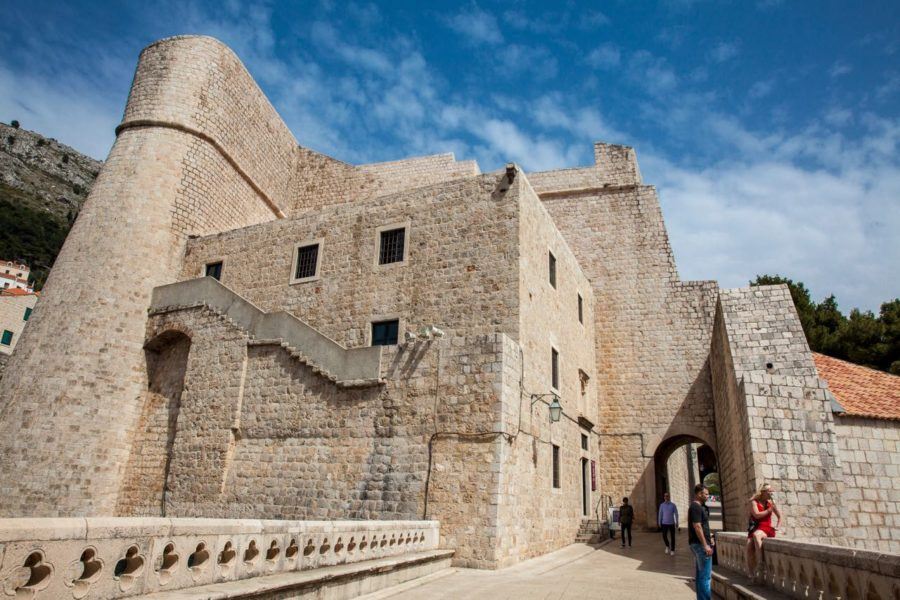
The Old Town is a gorgeous place to wander around, nestled by the sea with long-reaching piers and tall white stone walls rising from the sea; it is truly a sight to behold. This is one of the absolute cornerstones of the best Balkans itinerary. Seriously, if a general Balkans travel route doesn’t include Dubrovnik’s Old Town, something has to be off.
I personally felt that my favorite time of the day to head into the Old Town was to go in the evening. At this time, you can wander through the white buildings with red roofs and watch birds swooping and tweeting in the sky above throughout the day. There was still a buzz in the air at this time, but there weren’t as many people.
Within the Old Town itself, there are several museums and restaurants to peruse and churches. Continuing through the Old Town, you will eventually find yourself by the sea with beautiful views over Lokrum, the Adriatic, and further up the hill, which overlooks Dubrovnik. There is indeed something here to suit everyone; we did a lot of walking around the town, soaking up the atmosphere.
Mt. Srd
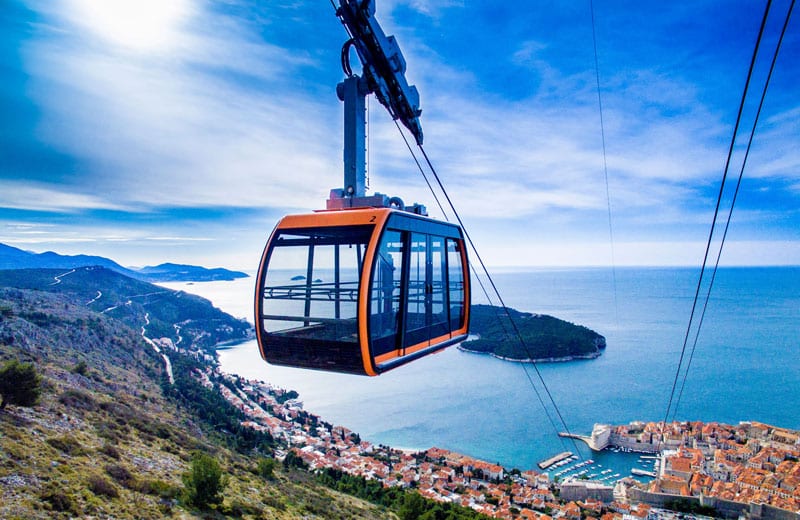
If you look up from the Old Town, it is possible to see a cable car that rises towards this domineering hill. I will admit that we did not take the cable car but climbed up the steep hill – before you think we are some great fitness people, I should explain that our accommodation was halfway up this hill next to the footpath entrance up the hill. So it would have been quite the climb to go down to the cable car and then back up from the cable car.
If you take the cable car up, you will arrive fresh-faced to see all the stunning views. A museum at the top shows pictures of Dubrovnik during the war. There are also views of the mountains beyond Dubrovnik, the Old Town, and the Adriatic.
If, however, you take the footpath up to Mt. Srd, try to do this during the morning or the evening, as the heat can be pretty intense in the middle of the day. Once you emerge from the forest, you will start to follow the stations of the cross as they make their way up the hill.
The walk is quite steep, particularly if coming from the old town, there are several steps to navigate before you even get to the footpath. There are fourteen stations, so bear in mind that you will have some indication of how close you are to the top. Once reaching the top, the views are worth it, and you can get panoramic shots of the Old Town.
Ultimately the primary purpose of heading up – is for the view; the cable car carriages have glass sides so you can see the view, and the walk has many points where you can stop and admire the view. If you fancy the walk, it is an excellent way to stay fit; if you fancy the cable car, then that is fine too. Do whichever suits you, but consider going to the top of the hill.
Lokrum Island

Lokrum is a beautiful lush green island complete with a monastery (and Game Of Thrones’ Throne). This island houses a monastery, a botanical garden, and a naturist beach, so there is potential to see naked monks covering themselves with palm leaves. It seems obvious to say, but you should take either one of the boats to this island or a kayak. But Lokrum does have fantastic views of Dubrovnik, so it is well worth a visit.
What Not To Miss in Dubrovnik
Do not miss the old City Walls. There is something slightly intimidating yet beautiful in how they stand firmly. There are two ways that you can do this:
- The first way that you can do the city walls is the most convenient and easiest. This is quite simple to pay the 20 euro and walk along the city walls; this will award you stunning views of the old town and the sea.
- The second way is probably the best way to get the best views of the walls themselves, and this is to hire a kayak from the left side of the main entrance into the old town; it costs about 30 euro for a three-hour trip where you see the city walls and the island Lokrum which is probably the most cost-effective way of doing both if you are on a budget.
One Month In The Balkans: Dubrovnik In A Nutshell
- See the Old Town, and it’s GOT merchandise
- Ascend Mt. Srd
- Go to Lokrum
- See the City Walls
- Or, try some of this list of things to do in Dubrovnik
Kotor, Montenegro
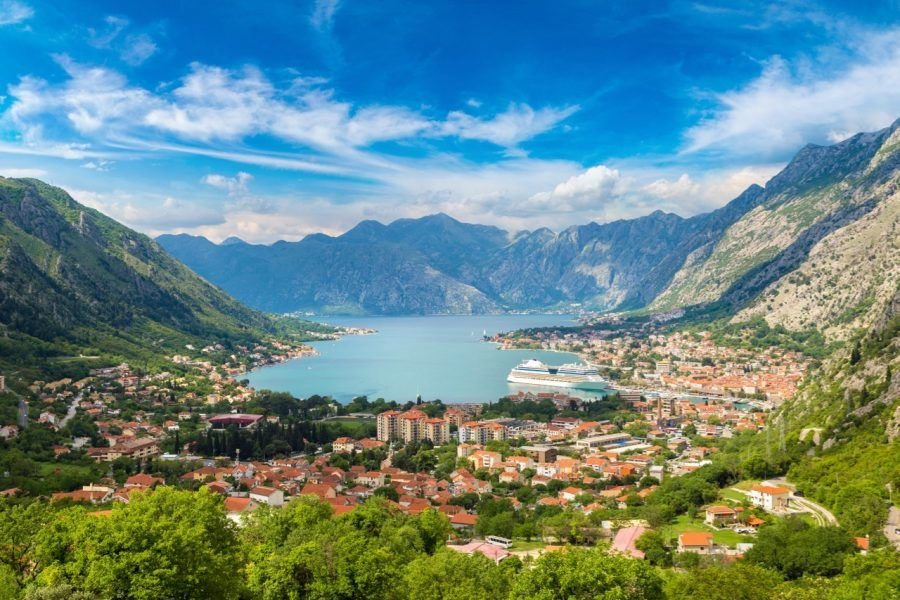
In Kotor bay’s heart is an old Venetian village that sits at the foot of the dominating mountains surrounding it. Despite often being overlooked for its lack of sandy beaches, it is a must-see place that belongs on all Balkan routes.
How To Get To Kotor
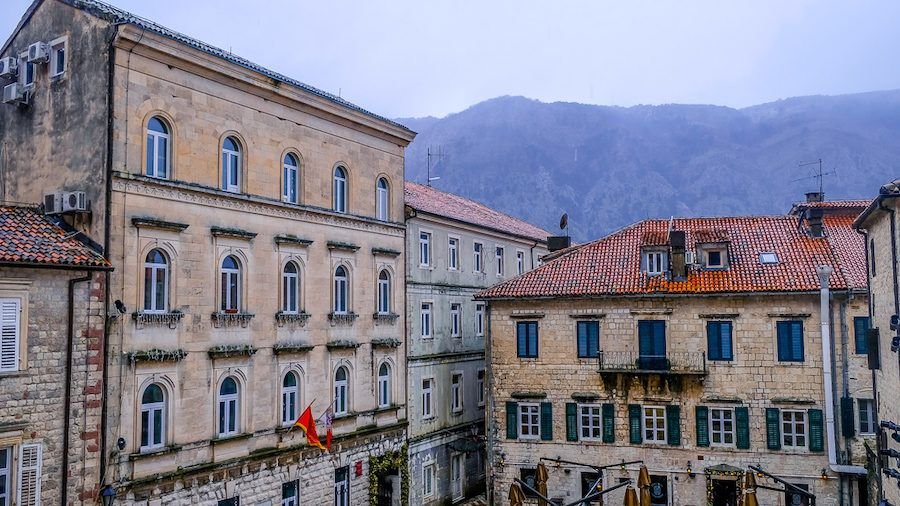
The bus from Dubrovnik is at the same bus station which we arrived at. We took the 15:00 bus from Dubrovnik station to Kotor (the entirety of the bus route is from Dubrovnik to Podgorica. The bus cost us 18 euro each and another small amount for baggage (usually 1 euro).
The bus journey was very long; my wife and I, along with everyone else, had to get off at the border crossing on both sides (the Croatian border and the Montenegrin side).
However, I am noticing a trend as we drive along the Adriatic coast and surrounding regions; the drive is beautiful. I read my book for the first half of the journey, but after crossing the border into Montenegro, we ended up at Herceg Novi. This was the bus’s first stop on the way to Kotor; from herein, the views were stunning as we entered the Bay of Kotor. We wound around the bay on our way up to the top left-hand side and into Kotor.
This, indeed, was a magical journey with its soaring black mountain ranges enshrined in clouds and the deep blue sea spattering slightly from the gentle downpour.
What To See In Kotor
Fortifications
Fortified since the Illyrian period, these fortifications were reconstructed by Justinian, the first in the 6th Century. However, today’s fortifications are due to Venetian rule when Kotor was part of Albania Veneta. The fortifications have since been owned and used by the French, British, Russians, and Austro-Hungarians.
The fortifications are a steep climb towards San Giovani’s fortress and around the Old Town. It is possible to pay 8 euro to climb up the fortifications toward the castle. There are many stunning views across the Bay of Kotor and the old town itself from up here. In particular, those who climb up the fortress can see the churches’ stunning domes and towers mentioned below.
As a word of warning, many signs warn people against climbing up the fortifications due to the steep gradient of the climb. You do not need to be an Olympic athlete to climb to the fortress but do take your time and ensure that you are in reasonable fitness and are wearing the right shoes.
Churches

Within Kotor itself, there are several churches. The three main churches are found within the old town itself. St Luke is a small church, originally constructed as a Catholic church in 1195; it then switched to having two altars between 1657-1812. During this time, there was a Catholic altar (for Croats) and an Orthodox altar (for Serbs). Finally, in 1812 this church was given to the Orthodox church.
A much larger Orthodox Church is found in the old town of Saint Nicholas.
Finally, if you follow the loud sound of the bells ringing, it will bring you to St Tryphon’s Cathedral. This church is built with two imposing bell towers, which can be heard all over the old town. This cathedral is the best known in the town and contains a veritable treasure trove of artifacts. These artifacts range from ornate crosses and decorated figures to fourteenth-century frescoes and golden reliefs of saints.
Probably the best-known church is just outside Kotor near a town called Perast. This church is called Our Lady of the Rocks and is on an island. Many vendors will try and sell you boat tours to the island. However, it is much cheaper to take the local bus if you are on a tight budget to Perast (a beautiful town within its own rights) and then take a boat over towards the church from there.
Old Town

There isn’t the hype about Game of Thrones in Kotor, but the Old Town has an entirely different feel. Although Mostar’s Old Town had many markets, Kotor has an equally artisanal feel but is mainly based in shops rather than on stalls.
The Old Town comprises a few ramparts that you can see and many narrow streets comprising many colorful shops within the white-walled city.
What Not To Miss In Kotor
Located just outside the old town, this steep climb up the mountain provides the fortifications and bay’s most stunning views. This particular trail is known as the Ladder of Kotor.
Partway up this winding track, you will find an old farmhouse where two older men will sell you cold tea and a chance to look at the view. This costs about 3 euro for a 500 ml bottle of tea; it is somewhat expensive; however, in slightly broken English, they tell you a bit about the area that they live in. As with the fortifications, this does require a certain degree of fitness.
It is also fascinating that you can follow the path to the right of this house and enter an abandoned village. It was somewhat challenging to understand what the man was saying, which I believe was destroyed by either Napolean, Austria-Hungary, or the Bandits. However, it is well worth a look.
From this point, it is also possible to enter the fortifications through a window in the wall and then walk down into the Old Town. If you are up for the challenge, I recommend climbing this path; there is even a bakery at the bottom of this hill to provide you with Burek to help you up the hill!
One Month In The Balkans: Kotor In A Nutshell
- See the Old Town
- Soak up the Churches
- Climb the fortifications
- Or climb the ladder of Kotor
Podgorica, Montenegro
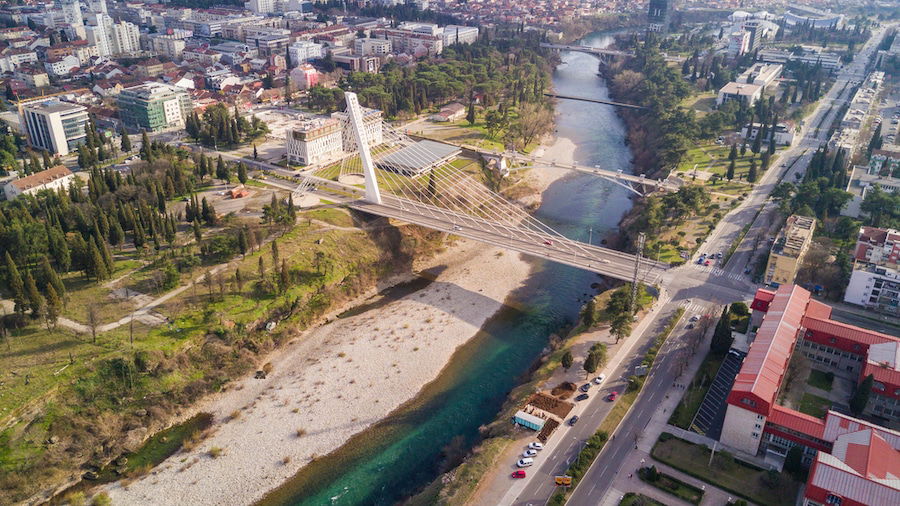
Montenegro’s capital is often overlooked due to its lack of historical sights and beaches. Though the city certainly can appear to offer very little compared to other Balkan cities, it is a worthwhile stop on any trip across the Balkans, especially when heading further east.
How To Get To Podgorica
From Kotor, we took a two-hour bus ride through the Montenegrin countryside toward the capital of Podgorica. This bus journey cost us 7.5 euro and a further 1 euro for luggage.
You will probably hear from any tourist agency or hostel that you should not bother visiting Podgorica as it is boring. There are only coffee shops that are interesting in the city. While it is true that there is not a massive amount of things in Podgorica itself, and places such as Budvar may be of further interest, I do believe that Podgorica should be visited. However, if you do fancy Budvar, then, by all means, head there; it is not covered in this article as it was not a part of our itinerary.
What To See In Podgorica
The Old Town
The Old Town of Podgorica is no match to Dubrovnik’s or Kotor’s, but it is worth looking at. It is worth seeing the clock tower in the square within the Old Town itself and then heading around the corner to look at the old bridge and a ramble by the river.
What Not To Miss In Podgorica
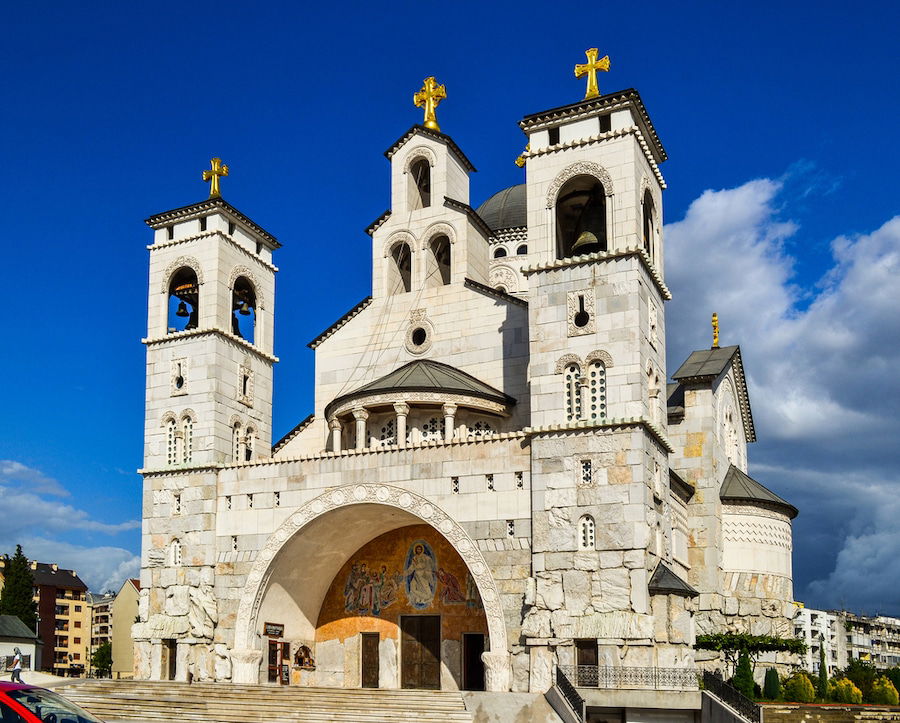
This stunning Orthodox Cathedral is located in the new section of town. The Cathedral was completed and consecrated in October 2014 and houses stunning iconographic murals over every wall.
If you have any doubt about whether Podgorica is worth a visit, I can honestly tell you that this church makes it necessary for you to visit it. From the outside, it looks like a reasonably standard Orthodox Church built in white marble.
From the inside, however, are many paintings on a golden background with marble floors. One particular oddity of this cathedral is found on the top right-hand side of the main entrance. This painting depicts hell and caused controversy by showing Tito, Engels, and Marx all contained within the fiery inferno.
This cathedral will make the trip worthwhile, and the town provides an excellent break on the way toward Kosovo.
One Month In The Balkans: Podgorica In A Nutshell
- See the Old Town
- Go and see the cathedral
- Only stay a few days, as there is not a huge amount to do
Pec/Peja/Peje, Western Kosovo

Located in Western Kosovo, Peje has a very mixed heritage and contains many impressive structures, and has some of the most rustic and astounding mountain scenery in the Balkan area.
How To Get To Peje
Two buses run from Podgorica to Pec, Peja, or Peje. The entirety of the journey takes nearly six hours, so I recommend taking the 07:45 bus as this will get you to the bus station between 13:30 and 14:00. The other alternative is the 21:00 bus, which will get you to Peje at 04:00. The bus itself will cost 16 euro, but there was no extra charge for luggage.
The journey, as usual, is stunning. The bus itself takes you along the gorge up toward the Kosovo border. Once crossing the border, you will find yourself in Kosovo’s spectacular green mountains, and then it is simply a drive down towards Peje itself.
What To See In Peje
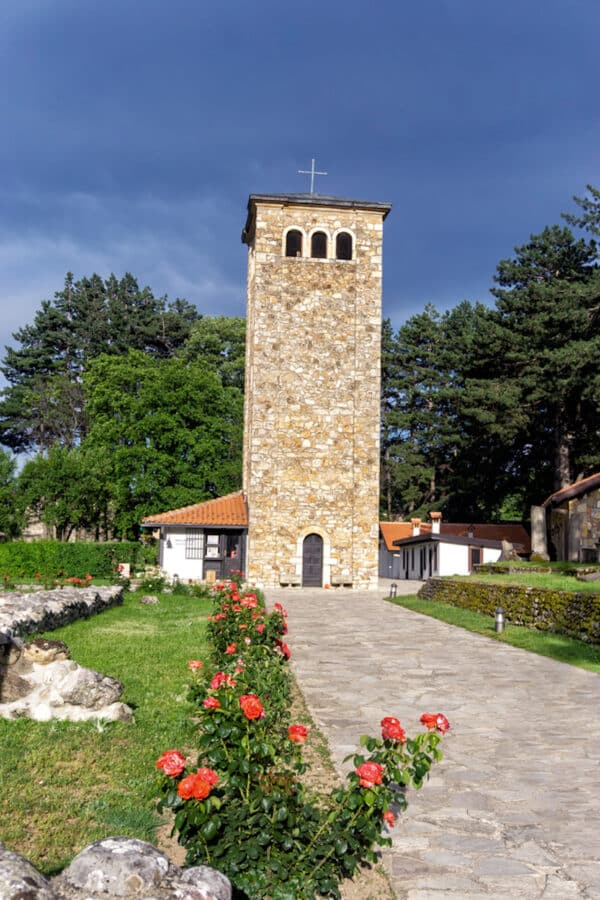
The Countryside
Peje is surrounded by many luscious green mountains, which are heavily laden with pine trees. Upon even walking a few minutes out of the town center, you are met with stunning scenery. It is hardly surprising that the Rugova Valley has its own tourist center opposite the Patriarchate entrance.
Around this region, there are many opportunities to explore the surrounding nature. There are caves, lakes, forests, mountain ranges, and waterfalls around the area, all of which are waiting to be found. There are also more formal ways to explore the countryside, such as through the Balkan Natural Adventure (information at the Rugova Valley Tourist Centre) or over the Via Ferrata, including zip wires and climbing.
The Ethnographic Museum
The Ethnographic Museum is an excellent way to understand more of the area’s culture. Although small and only housing several exhibits within it are traditional Ottoman houses, it shows many of the local artisans’ crafts. I recommend asking the tour guide many questions about the exhibits and local lifestyle as otherwise there is not a huge wealth of explanation to go alongside the exhibits. It costs 1 euro to enter, and a staff member walks around with you.
Decan Monastery
Located just outside of the main town (take the bus towards Prizren), it costs around 1 euro to ride there and probably the same back (you can, however, do this at the next destination of Prizren). This stunning monastery is on the endangered list of the world’s wonders and consists of a beautifully painted monastery in a very vivid style.
Kosovan Nato Forces still guard the monastery (much like other Serbian Orthodox monuments).
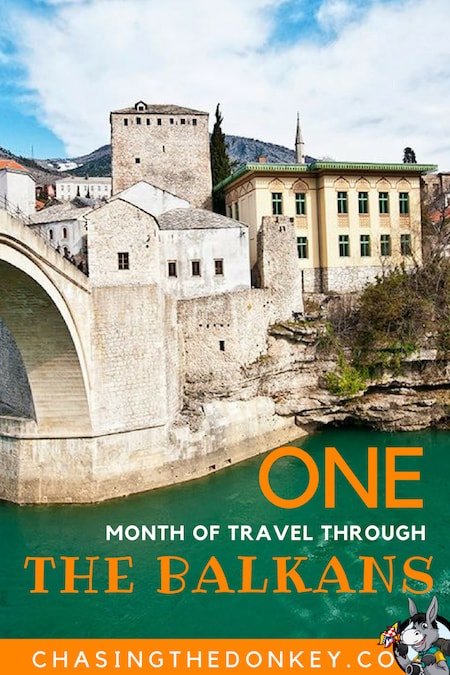
What Not To Miss In Peje
The Patriarchate of Pec is very similar to the Decan Monastery in that it contains many paintings. However, it is on the do not miss section as it is inaccessible by bus, which could be off-putting to people.
However, it is easily walkable from the town center (2km) and is in a beautiful red building with colorful details surrounding it. Inside, a vast collection of icons is painted on almost every building surface. As you walk through the four churches (they are all connected), you will see the evolution of the painting style, mainly how humankind’s understanding of proportion evolves throughout the artwork. It is also interesting to note the different time periods in which the church would have been decorated.
Much like Decan, you will also need to surrender your passport to access the monastery and not be put off if you see any armed guards moving around the place.
One Month In The Balkans: Peje In A Nutshell
- See the stunning countryside.
- Be amazed by beautifully painted churches.
- Don’t forget to try local food and see the local artwork.
Prizren, Kosovo
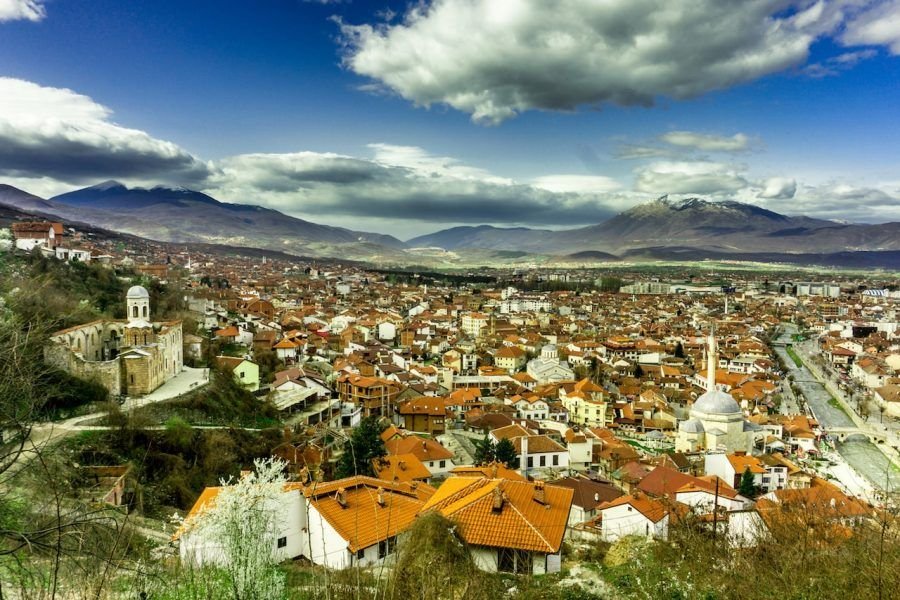
The oldest city in Kosovo, Prizren is an authentic Ottoman-style town and is a great way to experience a different side of Kosovo. The people are friendly, and the architecture is impressive; Prizren is Kosovo’s true historical and spiritual destination.
How To Get To Prizren
The bus journey to Prizren is effortless; it is short, takes a total length of 1.5 hours, and is cheap, coming in at a total of 4 euro. As part of the journey, you pass by the roundabout close to Decan monastery, which would make a good stop. It is also possible to stop in Gjakova, a lovely city in Western Kosovo that could merit another visit if you desire due to its beautiful setting and Ottoman architecture.
Once in Prizren, you are dropped just north of the Old Town, and it is an easy walk down the street towards the Old Stone Bridge; it is also possible to take a taxi.
What To See In Prizren
Old Stone Bridge And Shadervan Square
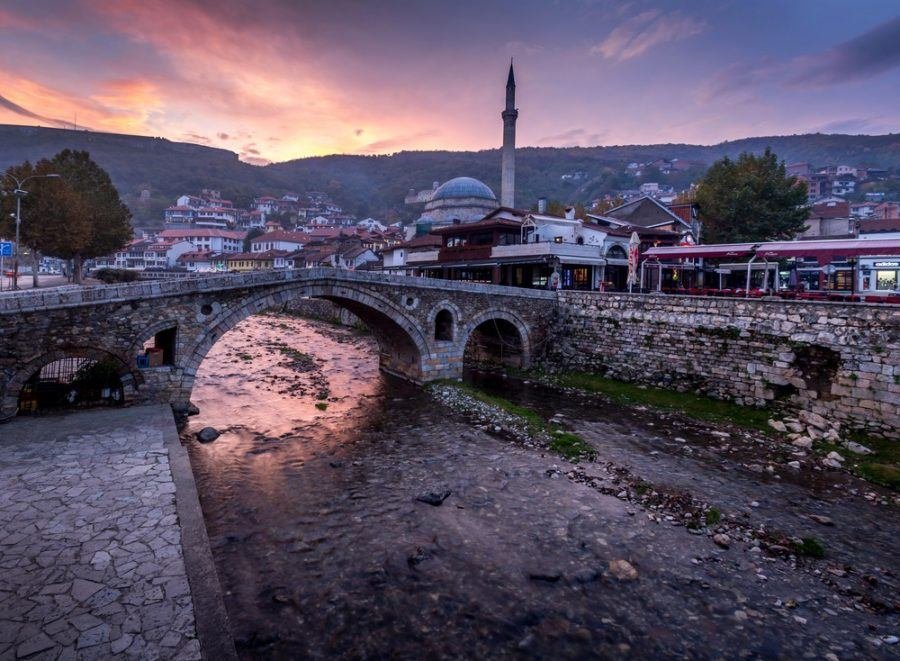
The historic heart of Ottoman Style Prizren is where most of life can be found. It is usually filled with people, and there is always a restaurant to be found. This is particularly true of Shadervan Square, a series of restaurants located in a square around a water fountain.
If you follow the road via the Sinan Pasha Mosque towards the main road, you will find the Old Stone Bridge, which is definitely worth a look and a crossover.
Sinan Pasha Mosque
Located between Shadervan Square and Old Stone Bridge is this important religious building. It is the largest Mosque in the area, and its minaret is easily visible from many places in town. Not only is this mosque beautifully decorated with flowers inside, but it is also contained within some gardens, which provide an excellent place for rest and thought.
There are many other mosques to explore in Prizren (over 40 of them, I am told). You may take your pick; from the outside, the Bajrakli Mosque is impressive with its ornate wooden details; however, we did not get to see it inside.
If you visit any mosques in Kosovo, please ensure that you are respectful of the local religion. Both men and women are to take their shoes off before entering. Women need to cover their heads with a headscarf.
Our Lady Of Ljevis
We did not have much luck when it came to this church, which is said to house an endangered collection of beautiful blue icons naturally protected by the local authorities. This is located on the other side of the river from the Sinan Pasha Mosque. I have read that it is possible to get inside to see the paintings; however, we found this proved difficult as there are no official opening times, and the priest is not always there to show you around.
This said, it is worth a look, as the outside shows an impressive layout, and some of the original paintings can be seen through the gates at the entrance to the church.
Fortress
Walking down through the secret passage towards the river to return to the town is possible. Located at the top of the hill is the Castle of Prizren. Entry is free to the fortress; there is not much there in the conventional tourist sense by means of explaining the fortress; however, there are beautiful views over the entire town. This is a steep walk up if you follow the way of the stone. It is also possible to go along the river and then up the other side, which I believe is a much more gentle walk.
Do Not Miss In Prizren
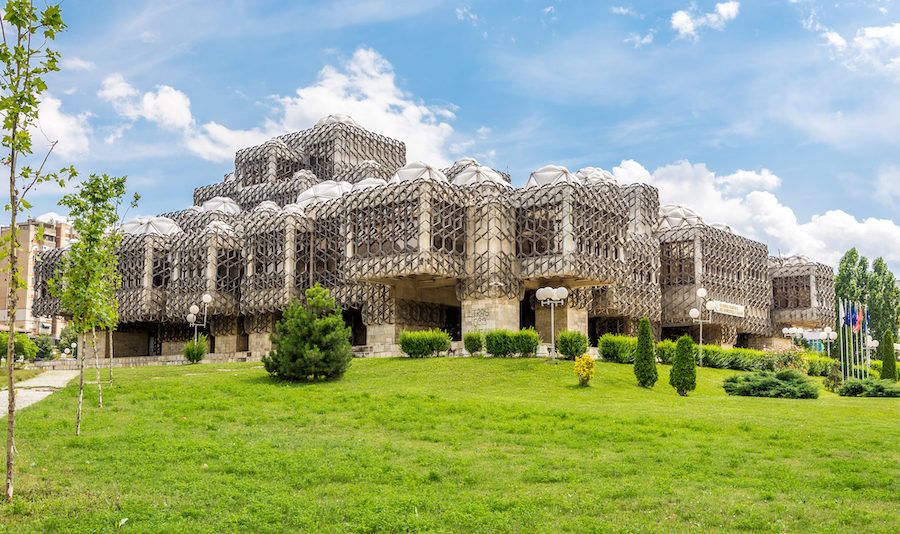
It would be very easy to scoff at the idea of going to the Architecture museum as being just a tedious exercise in dusty artifacts. This museum is based in an old Hammam, and the guide is very friendly and explains how the building would have been used. There is not much explanation of the exhibit, so at with the Ethnographic Museum in Peje, ask lots of questions. The tour’s highlight is climbing the clock tower and gaining views of the city with its rising minarets. The cost to enter the museum is 1 euro and is certainly worth a visit.
One Month In The Balkans: Pizren In A Nutshell
- See the many religious buildings.
- Climb a tower or to the fortress to get a greater view of Prizren
- The main square and surrounding streets are filled with restaurants; make sure you try something local!
Move This Adventure To Your Inbox & Get An Instant Freebie

No spam. Unsubscribe at any time.
Skopje, Macedonia
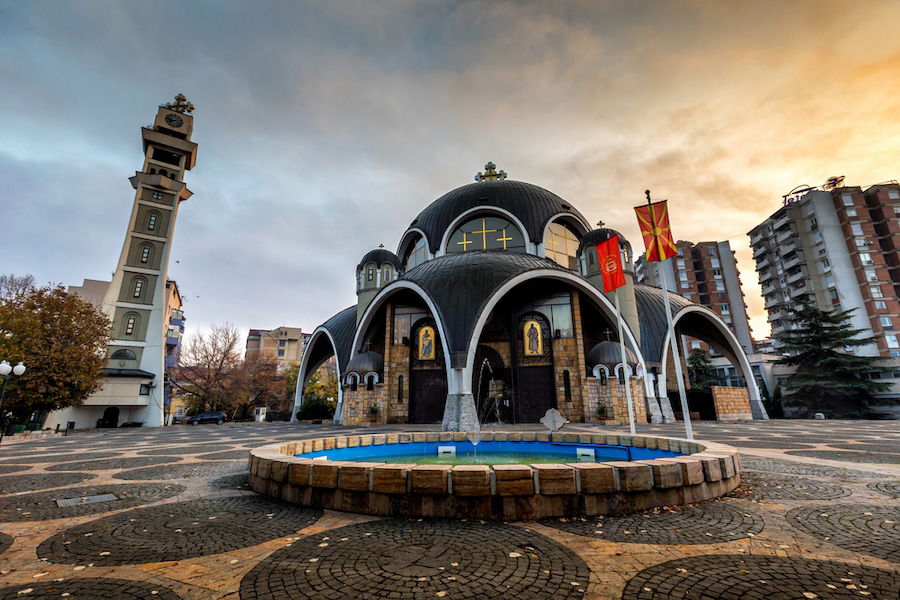
The capital of the marvelous county of Macedonia. Skopje is a place that has a genuinely majestic town center. Every art lover should add Skopje to their bucket list.
How To Get To Skopje
Getting to Skopje is just a short ride from Prizren. The problem is that there are only two buses; one leaves at around 05:30, and the other leaves at 09:00, so the chances are you will need to take the bus early to continue your Balkan trip route.
The ride is pleasant enough, and you will find yourself at the Macedonian border within no time. Upon crossing, you will very soon be in Skopje. The final bus terminus is located just outside of the center of town. I recommend you keep an eye out for a bridge with lion stations on it. Upon seeing this take the bus stop off the bus; you are very close to the town center. This journey costs 9 euro and takes about two hours.
What To See In Skopje

Fortress
Set on a hill above the Bazaar, the fortress is an unmistakable landmark on the skyline of Skopje. This venue is free to enter and is worth exploring, as walking along the walls provides many aerial views that allow a greater understanding of Skopje’s makeup.
Unlike some of the other hills listed in this article, the Fortress above Skopje is a straightforward climb. However, it is worth noting that the fortress is usually in direct sunlight with very little shade, so bring a water bottle with you; there is a drinking water fountain near the gate if you need to fill up your bottle.
The Main Square And Around

Scattered with literally hundreds of statues, the main square is every artist’s dream. If you are coming towards the town square from the Bazaar, then you will be greeted with a massive fountain with a statue of King Philip II of Macedon at the peak of this fountain with his fist raised.
You will pass many other statues as you continue down this long street toward the stone bridge. The other side of the old bridge is a square known as Macedonia square. It features a grand warrior on a horse at the pinnacle of a fountain surrounded by lions and soldiers with jets spraying water everywhere.
As you walk around this area, you will find many restaurants suiting all tastes and an extensive collection of statues derived from Skopje 2014, a controversial campaign to bring in more tourism. Further down this street will also find the Mother Teresa Memorial House. This house is well worth visiting and consists of a few exhibits from Mother Teresa’s life, a little history, and a small and simple chapel. All in all an excellent way to learn some more about such an influential historical figure.
The Bazaar
The Bazaar itself is much like any other old town/bazaar, but it is worth having a wander around its stone-flagged streets. These streets contain many Ottoman-style buildings but with a certain Macedonian flair. You will be able to find a definitive collection of Macedonian treats and regional food. It is a fantastic place to while away the hours with strong coffee and the sun beaming around you.
On the outskirts of the Bazaar, as you walk towards the old stone bridge, there is a hammam located opposite the University building. This Hammam now homes the National Art Museum and houses an extensive collection of local artists in many different artistic styles. The entry costs 100 Macedonian Denar.
The Bridges
As stated above, there was a great effort to bring in more tourists, which resulted in many statues being created. Two of these bridges are of particular interest.
Located on the bridge of the arts are many sculptures featuring local artists. If you have visited the National Art Museum mentioned above, you may recognize many of the painters’ names.
This bridge does, however, stretch further than just painters. Here you will find musicians, singers, educators, poets, and composers all standing side by side. It truly is a fantastic place to see Macedonia’s rich artistic and cultural heritage.
Located alongside the bridge of the arts is the Bridge of Civilisation. This bridge houses the sculptures of many influential rulers throughout the history of Macedonia. This bridge may provide a different perspective if art is not your thing.
The Stone Bridge is the next bridge along the river and connects King Phillip II’s statues and the Warrior on a Horse. This is potentially the oldest bridge in the city and contains twelve arches spread across the river. This bridge is ideal for wandering across to look at the various sculptures surrounding it. The bridge acts as a somewhat centerpiece between the two significant squares.
What Not To Miss in Skopje
St Clement of Ohrid is a church located just outside the City Square and easy to walk to. Upon arriving at this church, you will be taken in by its impressive domed structure, which dominates the square it is located in. Though the outside is impressive enough, the paintings inside are equally impressive.
Within the walls, you will find very modern paintings that depict various scenes from the life of Christ in vivid color on a stunning deep blue background. Overlooking the whole scene is a domed roof adorned with flying angels and a majestic backdrop of Jesus in heaven.
Due to its location being outside the city, it would be easy to miss this church, but it is well worth visiting. Though not as old as other churches within the town, this does not harm the beauty held within its walls.
One Month In The Balkans: Skopje In A Nutshell
- See the sculptures, which must border on the thousand in number
- See the bridges that span the river
- Stroll around the main square and eat some food there
- See the church of St Clement of Ohrid
Balkans Itinerary 4 Weeks Wrap
The above Balkans itinerary should take about a month as long as you are not rushing through each place. In some places, we could have spent a few more days than we did, others maybe a day or two less. But ultimately, this was an ideal way to observe and soak up many places within the Balkans.
So, what is the best way to travel to the Balkans? Take the bus! We thoroughly enjoyed exploring the Balkans by bus.
We left Skopje to go towards Istanbul, but there are many other places to be explored within the Balkans if you desire. Extending your Balkan backpacking route is absolutely no problem whatsoever. For more information, look through the country sections located in the navigation bar above.
- Split Accommodation
- Where To Eat In Split
- Dubrovnik Hotels, Apartments, And Villas With Pools
- 4 Day Dubrovnik Foodie Tour
- Bosnia & Herzegovina Car Rental & Driving Tips
- Macedonia Car Rental & Driving Tips
- Best Of The Balkans – Hidden Gems
- Croatia Car Rental & Driving Tips
- Kosovo Car Rental & Driving Tips
- How To Get From Zagreb To Budapest
- Best Macedonia Beaches And Cafes
- What To Wear In The Balkans
- Ultimate 5-Day Balkans Travel Itinerary
- Two-Week Road Trip Itinerary Through The Balkans
- Balkan Cruises – Where You Can Cruise To In The Balkans


When it comes planning a balkans travel.it can be difficult to know where to start.thanks for the help
nice posting thanks